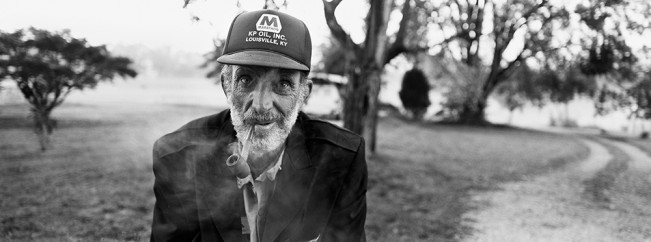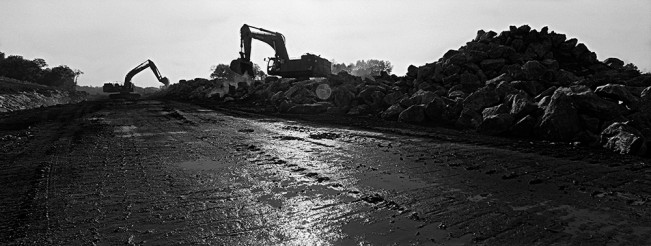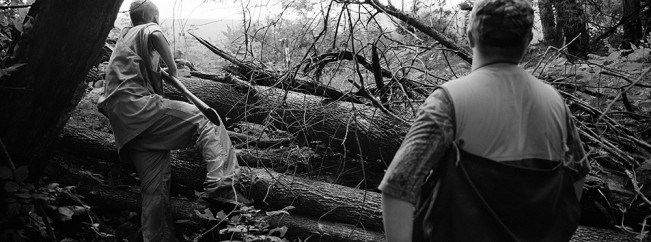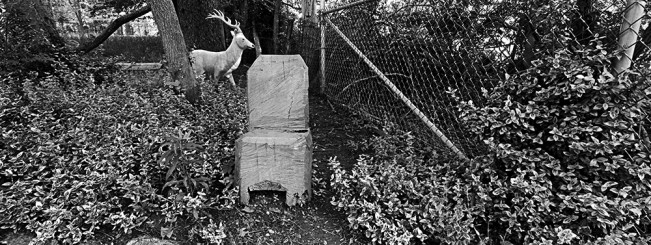Robb Hill: HomeLands
Robb Hill is a documentary photographer specializing in long term projects that explore how people create community. For his project, HomeLands, Robb returns to a community he knows well, his hometown of Utica, Indiana in hopes of capturing a place in transition. That experience made him realize that though change is inevitable, the memories remain deeply rooted.
HomeLands will be at Photographic Archives Gallery in the Ekstrom Library on the University of Louisville campus. The exhibition runs through May 22. Gallery hours are Monday through Friday, 8am to 5pm. Robb has extensive work and travel experience in Eastern Europe, The Balkans, and Southeast Asia. A Midwestern a heart, he’s lived in Budapest, Chicago, Washington DC, and soon Atlanta, with his super-powered wife, a cat, and an ever expanding drum set.
I believe land makes people who they are. The relationship you have with the land you’re on sets the cornerstone of your being. It doesn’t matter if you live in a small apartment in a dense city or on hundreds of acres in the middle of nowhere.
When that relationship is severed, identity is lost.
HomeLands started as a documentary project, to record the land where I grew up before big machines erased it. I have been returning to Indiana several times a year for the last ten years to hike the trails and fields I played in as a kid. With each footstep, I looked for signs of the world I once knew so well.
An abandoned car that friends stripped the chrome from is now little more than a pile of rust. A thick stone wall surrounding a small family cemetery still stands after a century and a half, but fails to keep mother nature from planting trees inside. Concrete stairs on the side of a hill going nowhere still go nowhere. These ruins were once my playground, guideposts, and tetanus hazards. They were also my first history lesson.
These ruins made me realize we define ourselves by shaping the land around us. By walking the same trails over and over, I came to see how land holds on to memories far longer than people do. And how the same land also allows us to create new identities on top of old.
But what happens when change comes from the outside? The construction of the East End Bridge and the extension of I-265 will change this area dramatically. The woods, pastures, and limestone cliffs are being converted to concrete, steel, and asphalt.
This transformation overrides the past lives I see on my walks. I don’t think anymore about the farmland and woods being lost — I think about how it feels to see your home slowly vanish around you.
I’m no longer trying to record the past. Instead, my walks have become a meditation.
When my family and friends look out onto the new landscape, they won’t see the homes they’ve made. They won’t see themselves. Who will be the stranger then, the land or the people who remember it?
Posts on Lenscratch may not be reproduced without the permission of the Lenscratch staff and the photographer.
Recommended
-
Shinichiro Nagasawa: The Bonin IslandersApril 2nd, 2024
-
The International Women in Photo Association Awards: Lorraine Turci: The Resilience of the CrowMarch 16th, 2024
-
The International Women in Photo Association Awards: Rayito Flores Pelcastre: Chirping of CricketsMarch 14th, 2024
-
The International Women in Photo Association Awards: Louise Amelie: What Does Migration Mean for those who Stay BehindMarch 12th, 2024
-
Brandon Tauszik: Fifteen VaultsMarch 3rd, 2024











































































